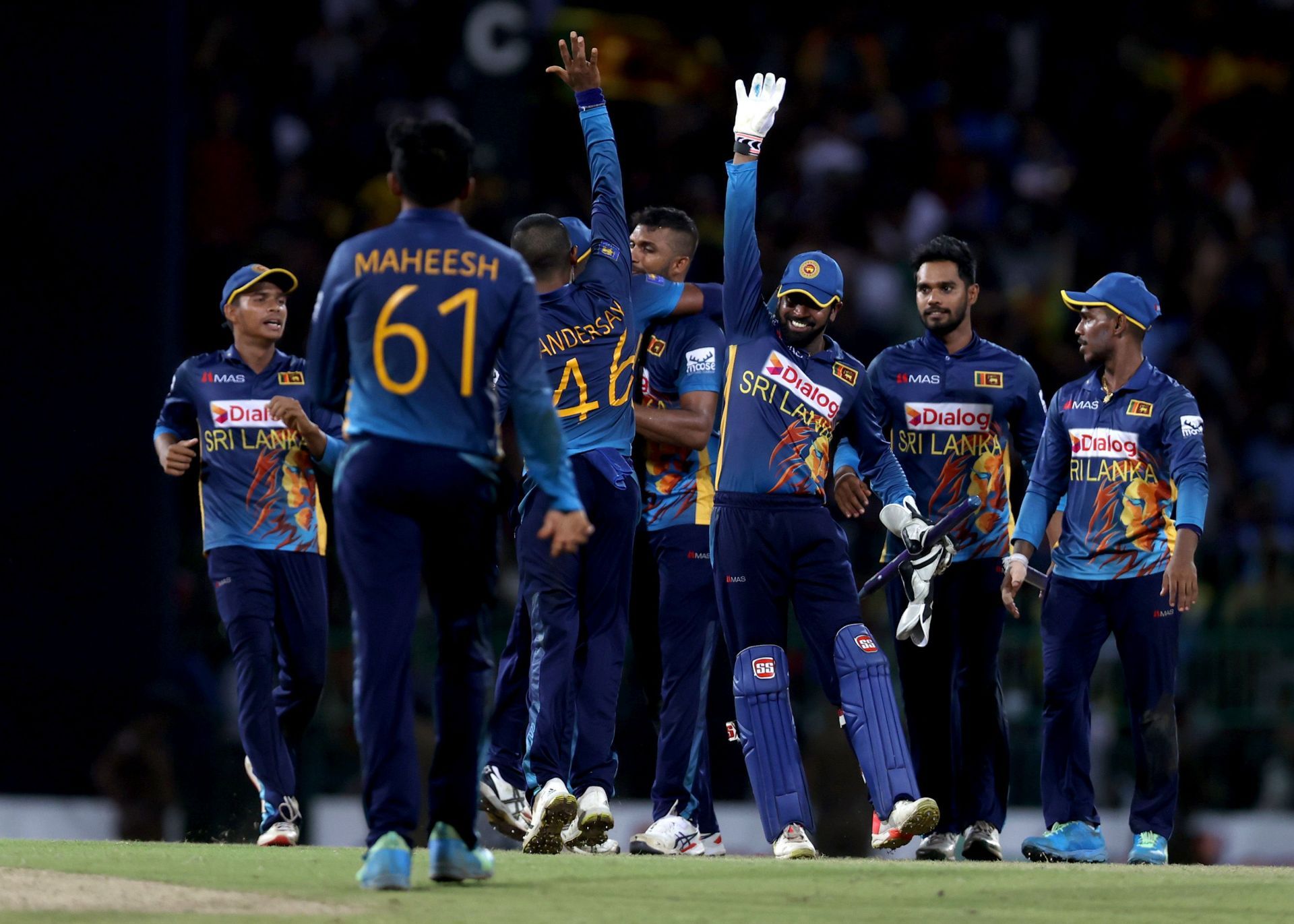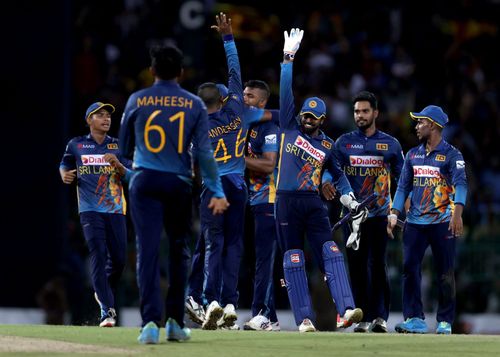
Sri Lanka might be bleeding but its cricket is healing

Over the years, the fad of international cricket has caught up with most spheres of the population. It remains the top-most level for the sport but its novelty has always been in the different approaches, the different atmospheres and the different brands of cricket that teams play.
Quite often, this myriad range is what prompts people to forego everything else and just concentrate on the sport. It also makes fans want to watch what nations from other parts of the globe are indulging in.
For example, people in India are mad about the Indian cricket team, and rightly so. However, they aren’t too averse to watching, say, Australia or England because there is intrigue around what they are doing and what challenge they will present when they inevitably come up against the Men In Blue.
For much of the 2000s, Sri Lanka were the team that most people on the planet wanted to watch. Not because they were doing well and were one of the most consistent teams from the sub-continent, but because they had such variety and housed so many unconventional players that it became convention. Simply put, they were as unique as any side could’ve ever been.
At the top of the order, Sanath Jayasuriya regularly blazed away, courtesy his blend of jabs, slashes and scythes. Post his retirement, Tillakaratne Dilshan made that role his own, unfurling ‘Dilscoops’ and all sorts of cuts against every type of bowling. Kumar Sangakkara and Mahela Jayawardene weren’t unconventional per se. But in an era where power-hitting was becoming the norm, their effortless batting and nonchalance became the glorious aberration the sport craved.
The bowling, though, was perhaps what distinguished Sri Lanka. Once Chaminda Vaas hung up his boots, there weren’t many textbook bowlers they lined up with. Lasith Malinga ran in and did what he does best. Muttiah Muralitharan, arguably the archetypal unconventional bowler, took truckloads of wickets. Oh, and in between, there was a bit of Ajantha Mendis and Rangana Herath too – the former arguably the first mystery spinner in the modern era, and the latter being a classical but highly distinctive left-arm spinner.
So, you kind of get the point, right?
People followed Sri Lanka not because they were making World Cup finals every time those tournaments came around. They weren’t watching them because the fans in Sri Lanka made every game seem like a celebration, and something that was not to be missed. People watched Sri Lanka because they were fun – fun in that no one really know what was up their sleeve but almost everyone was aware that they would somehow get the job done.
Cut to the present landscape. Things, for those unaware, aren’t as rosy. On the cricketing front, the problems have been well-documented. They’ve not really been able to replace their legends and their younger generation, for much of the 2010s, seemed incapable of holding their own in international cricket.
From a non-cricketing perspective, things are worse in Sri Lanka at the moment. They have hit a nadir, as far as their economic status is concerned and there is, rather unfortunately, a sense of doom and gloom whenever talking to their citizens. The political situation, too, isn’t something that the nation would’ve envisioned, nor is it something that can be turned around in a trice.
Thus, it is only fitting that they have rediscovered their cricketing mojo – at a time when everything seems on a downward spiral and when the acquisition of basic living conditions is being considered a success. It is, in many ways, how it was back in the 2000s. The country wasn’t in as much turmoil back then, but at least Sri Lanka – the cricketing entity, knew how to tackle adversity.
Sri Lanka won an ODI series against Australia for the first time in 30 years
The last time Sri Lanka defeated Australia in an ODI series was in 1992. It has taken them 30 years to repeat that feat. This patch, by the way, also included them beating the Aussies in the game that mattered at the 1996 World Cup. It also included the Islanders stumbling at the final hurdle of an ICC event four times, before actually winning the entire thing (the T20 World Cup) in 2014 against India.
So, even when their cricket was scaling crescendos, getting the better of Australia in a bilateral ODI contest was beyond them. From that standpoint alone, this should tell you how big an achievement this is for Sri Lanka. That they’ve done it against a depleted Australian side doesn’t really matter. That they’ve done it, is what should count.
At different junctures in the series, Sri Lanka have been backed into a corner. Yesterday, too, David Warner threatened to take the game away until Sri Lanka roared back into the encounter, and tilted the scales upside down. In fact, that has been the trend this series. Just when it has felt the Islanders are down and out, they’ve found a way to stun the Aussies.
A lot of it has come out of the blue, to be honest. But then again, isn’t that the trait that has endeared thousands to Sri Lankan cricket in the first place? That tendency to flip the balance in the blink of an eye. That ability to use the most unconventional of methods to get the most conventional of results. That propensity to unite a country and bring thousands to their feet. That’s Sri Lankan cricket.
If anything, this series, which has shown how good the Islanders can be, has probably healed the nation (only partly) when it has been bleeding. Those in the island have been through tough times, and this is, in no way, implying who is at fault. But the people, as happens in most sovereign territories, are the ones to suffer. And Sri Lanka, because of their plummeting economic status and dwindling cricketing returns, have been hit harder than most in recent times.
For now, though, it seems that cricket has played its part. It might not be much, and after the Aussies leave town, everyone will be forced to go back to their lives – lives where nothing is guaranteed and every drop of fuel, oil and every grain of food has to be fought over.
In the previous decade, it didn’t feel that Sri Lanka would get back to where they once were as a cricketing entity. They aren’t there yet either. It’s just that now there is a sense that they could scale what many thought was an insurmountable peak. Again, there isn’t a guarantee where this path will lead to.
But with all that is happening, it is just enough. Enough to make people dream that their cricketing ambitions will align with those of the past. Enough to make fans believe that cricket, quite often the unifying factor, will provide joy in the darkest of times. And most importantly, enough for those around the globe to salivate at the prospect of a strong Sri Lankan cricket team.
Not many (if any) teams get the pulses racing as much as the Islanders. They might not do things the way the text-book preaches. But they get the job done. Both in terms of leaving a cricketing imprint, and in lighting up the lives of those who invest their heart, soul and time into Sri Lankan cricket.
It happened in the 2000s. And, it could just happen again. The backdrop is very different. But the cricketing narrative is eerily similar.